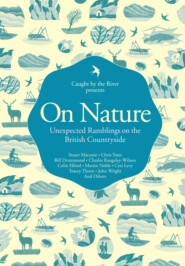По всем вопросам обращайтесь на: info@litportal.ru
(©) 2003-2025.
✖
How Can I Stop Climate Change: What is it and how to help
Настройки чтения
Размер шрифта
Высота строк
Поля
Much of the food on our supermarket shelves has travelled the world, some of it ‘air-freighted for freshness’, some by ship – and almost all of it by road. A piece of beef can travel 12,000 miles just to reach the UK shops. Ninety per cent of the fruit we eat and 40 per cent of our veg are imported into the UK. Air freight has the highest emissions of carbon dioxide per tonne of food – and is being used more and more.
Even food from the UK tends to be well-travelled. The average potato’s journey starts at the farm, goes by lorry to a factory or warehouse for packaging and is then taken by lorry to a centralised warehouse before distribution to the stores. One in four heavy goods lorries on UK roads are transporting food, clocking up 5.5 million food miles in 2004. That’s the equivalent of one potato travelling 220 times around the Earth. But on average, lorries are only just over half full. More efficient distribution could greatly reduce the impact of food miles.
Focusing only on food miles ignores the fact that producing and processing food accounts for around 14 per cent of energy consumption by UK businesses; and food, drink and tobacco manufacturers consume more energy than is used in iron and steel production. Keeping food cool contributes to the emissions total: fresh food, especially meat, is stored and transported in refrigerated containers that produce greenhouse gases.
Globally, food production contributes around 30 per cent of total greenhouse gas emissions, half of which come from methane. And to think that on average we throw away around a third of the food we buy – where, left to rot in a landfill, it generates yet more methane.
the footprint of a packet of crisps
To discover the carbon footprint of a standard packet of Walkers Cheese & Onion Crisps, the Carbon Trust plotted out the key stages of Walkers’ supply chain, from sowing the potato and sunflower seeds (for the oil) through to getting the crisps on the shelves and disposing of the packet. By looking at the energy consumption of each stage, and converting this into emissions, it worked out the total carbon footprint. Result: a packet of Walkers Cheese and Onion Crisps has a footprint of 75 g.
business as usual?
Do nothing to cut carbon dioxide emissions and the amount in the atmosphere will just build up. Climate modellers describe this scenario as ‘business as usual’. It assumes that emissions continue to rise at current rates – assuming continuing growth in the economy, and the on-going use of fossil fuels. If this were to happen, carbon dioxide emissions from fossil fuel would more than double by 2050 globally. Yet if we reduce the amount of energy we use, or start to switch to non-fossil fuel energy, we will slow down the rate of growth in emissions. It may sound obvious but the faster we make changes, the quicker carbon dioxide levels will stabilise.
‘The investments made in the next 10-20 years could lock in very high emissions for the next half-century, or present an opportunity to move the world onto a more sustainable path.’ Stern Review
how can the cuts be achieved?
There are many ways to curb greenhouse gas emissions. But the biggest savings will come from two simple strategies: using less energy and using cleaner fuels. We look at these more closely in the next two chapters.
chapter 4 (#u7b0d5c0d-3410-57a3-bc01-255b46870878)
saving energy (#u7b0d5c0d-3410-57a3-bc01-255b46870878)
Saving energy is a great way to shrink our carbon footprint. In fact it’s the first thing we should do. Why spend on power that we don’t really need?
save it
If we’re to play our part in reducing the dangers ofclimate change, we need to make serious cuts in ourenergy use. But how can these cuts best be made? InChapter 7 you’ll find out what you can do as an individual,but here we look at the first big steps we can take as asociety to save energy.
where the savings will come from
Imagine living in a home that was so well designed and insulated that it almost heated itself. Or living in a city where clean, fast public trains and buses turned up on time and took you where you needed to go. Where traffic jams, road rage and pollution were a thing of the past.
Making our energy work harder doesn’t mean going back to the Dark Ages – or even to the winter of 1974 when a three-day working week, electricity rationing and power cuts got the country through an energy shortage. Although we use more energy now than we did in the 1970s, we can save more as well. In fact the UK could cut its energy use by nearly a third just by eliminating waste.
In 2007 the government outlined energy-saving measures that would reduce carbon emissions by 6 per cent by 2020, saying that two-thirds of those savings would be from households, a quarter from business and 10 per cent from the public sector. Critics said even more could be done.
reasons to use energy efficiently
Fewer carbon emissions = cleaner air Fewer carbon emissions = better for the climate Do more with less = save money, reduce waste
how can these cuts best be made
The main sources of carbon dioxide emissions in the UK are electricity generation, road transport, energy use in the home, and industry.
homes and buildings
There are 21 million homes in the UK, from modern apartments to 200-year-old houses. Most rely on electricity from the National Grid and use gas to provide hot water and heat, with some households using solid fuel or oil as heating fuel.
On average, each UK household uses energy that produces 6 tonnes of carbon dioxide a year. Typically, 30 per cent of our overall carbon footprint from homes comes from heating, a further 11 per cent from heating water, 13 per cent from electricity for lighting and appliances and 3 per cent comes from energy used for cooking.
Although we need to use energy to keep warm, cook and run the fridge, leaky buildings and inefficient appliances aren’t making the best use of a lot of the energy we burn. In many UK houses almost half of all the energy used for heating simply escapes through the roof, windows and walls. Draughty buildings mean our central heating systems are working almost as hard to heat the outside as they are the inside of our homes.
But it doesn’t have to be that way. Designers have come up with plans that could slash the amount of energy we use in our homes: common-sense measures such as insulating walls and loft, double-glazing and lagging hot water pipes can quickly lead to less wasted energy.
Some local authorities have been trail-blazing in the race to improve energy efficiency in the home. In 2003 when the London borough of Merton stated that new developments in the borough must get 10 per cent of their energy supply from renewable sources, builders responded by looking for ways to make houses more energy-efficient. They wanted to keep their costs low by shrinking the absolute size of that 10 per cent of renewables. More than 160 other local authorities have since followed Merton’s lead.
The government has been criticised for failing to support the roll-out of the Merton Rule nationwide. To reach zero-carbon status, a building must have no overall carbon emissions as a result of energy use – achieved through high standards of insulation and heating design, combined with renewable sources of energy.
There are encouraging signs that the move to better building design and efficiency is taking hold – especially in continental Europe; but even around the UK there are a growing number of low-carbon buildings. Some individuals are achieving remarkable savings by adapting or building their own homes; and some commercial developers are beginning to see that energy-efficient buildings will make good business sense.
To encourage buyers to go for low-energy housing, zero-carbon homes are exempt from Stamp Duty (about £2,100 for the average house). An estimated 9 million new homes are needed in the UK by 2050: with that in mind, tougher building standards would do a lot to reduce the UK’s carbon footprint.
fact
Building standards for newand refurbished propertiesare set out by the BuildingResearch Establishment(BRE). A property built toits ‘very good’ Eco Homesstandard will cut carbonemissions by 32 per cent,as well as reducing wateruse by 29 per cent
Where heat is lost from a typical house (% of total heat loss)
smartening up existing properties
Most of us don’t live in new-build energy-efficient homes. Britain has streets of draughty Victorian and post-war properties – more than 4.4 million homes were built before 1920 and another 3.6 million date from pre-1945. Even by 2050 we’re more than likely to be living in a building that’s already standing today. So there’s no sense pinning all our hopes on new buildings. We need to deal with the big carbon footprint of the buildings we already have. What can be done to make them more energy-efficient?
The government estimates that what it calls cost-effective energy-saving measures could reduce carbon emissions by 17 per cent by 2050. Adding loft insulation to a house can save almost 1.5 tonnes of carbon dioxide a year, while cavity wall insulation can reduce emissions by a further 1 tonne a year – saving up to £160 of household energy bills into the bargain. Millions of homes in the UK could benefit from cavity wall insulation.
Older properties can be insulated internally and externally. Internal insulation can save more than 2 tonnes of carbon dioxide a year. External insulation costs more and can be difficult to install if there is not enough space under the eaves of the roof. Savings of up to 2.5 tonnes of carbon dioxide a year are possible for a typical three-bedroomed semi-detached house.
clever ways to save energy
Energy-efficient appliances inside the home can help lighten the carbon footprint of daily life. European standards have encouraged manufacturers to produce smarter fridges and washing machines, but electricity use in the home is still increasing because of the burgeoning number – and in some cases their increasing sophistication. On the other hand, clever gadgets can reduce the amount of electricity appliances use. Smart plugs and remote controls can cut emissions, simply by eliminating the use of Standby and intelligent central controls can improve the efficiency of your heating system. So-called ‘optimum start technology’, another way of saving energy, works by reducing the need to put heating on in advance.
Freiburg – Germany’s solar city
In 1944 British aircraft flattened more than 80 per cent of Freiburg in the south of Germany. Walk around the city today and you see an astonishing transformation. Not only have many historic buildings been restored but Freiburg has become a beacon of sustainability.
From its railway station to football stadium, this city of 200,000 people has almost as many solar panels as the whole of the UK. Thanks to a feed-in tariff the electricity companies buy solar power generated by households at up to three times the price that the householders buy electricity. This has made solar electricity cost-effective – and the impact is clear.
Solar panels producing both electricity and hot water are everywhere you look. Freiburg is also home to Europe’s foremost solar power research institute and a host of solar-powered concept buildings. One of these is a house that rotates on a pillar, following the sun. Another is an office tower with the southern side completely covered in solar panels.
The Freiburg suburb of Vaubon gets two thirds of its electricity from the sun. Its ‘passive houses’ virtually heat and cool themselves. Built on a North-South orientation to make the most of sunlight, with all windows double-glazed and large south-facing ones to let in more sunlight, they are also highly insulated to keep in the warmth. Fresh air is brought in through underground ducts using the soil to regulate the temperature. Solar collectors and ground source heat pumps provide warm water.
But there’s more. Vaubon’s ‘energy plus’ homes are designed to produce more energy than they consume. Triple-glazed windows are treated so that virtually no solar heat is wasted, 40 cm-thick external walls are fitted with high-quality timber and felt for optimum insulation, and a solar power station on the roof generates electricity.
Freiburg’s green credentials don’t stop at heating homes. It also boasts a highly energy-efficient transport system. Five tramlines (waiting time no more than seven minutes) and 22 bus routes encourage people to use public transport, and the city’s cycle lane network has grown from 29 km to more than 400 km in the past 15 years. There are more bikes than residents in the city. Cyclists have the right to ride both directions on one-way streets. One third of Freiburg’s streets are reserved for bicycles, one third for trams and buses and a third for private vehicles. A new bicycle facility next to the train station offers a safe cycle lock-up, rental and repairs. The city centre is a car-free zone, drastically reducing pollution and creating a relaxed atmosphere. With a car sharing scheme half of Vaubon’s 5,000 inhabitants have opted out of being car owners. A speed limit of 15 km per hour, a ban on parking except for loading, and bike racks along residential streets all encourage people to use bicycles.
Arriving in Freiburg is like walking on to the film set of a futuristic city. But it is here now and demonstrates the extraordinary potential we have to reduce our carbon emissions today.











